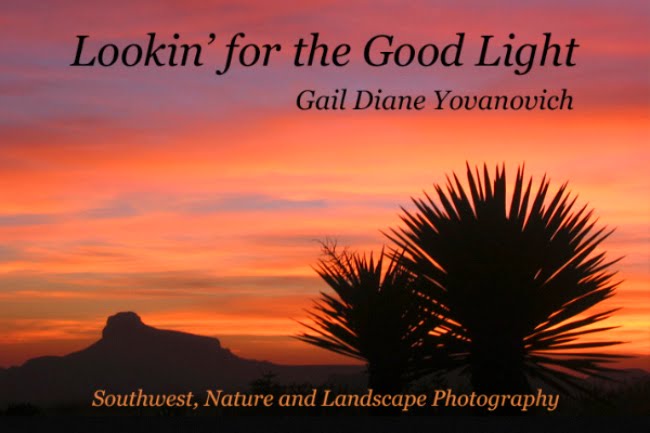Over Thanksgiving weekend last year, I drove down to the Big Bend area of West Texas, about an 500 mile trip one way. While there, I visited some friends in Alpine where I lived for several years. We had so much fun visiting, eating and reminiscing that I was loathe to leave when Sunday finally rolled around.
I do love the Big Bend area and its spare desert beauty, so on Saturday traveled down to Big Bend National Park to see what I could see. For photography, I much prefer this area in spring and early summer when yucca, agave, ocotillo, cacti and sage bloom as it's quite spare in winter when these beauties are dormant. But there I was, and so I set out with camera.
Departing from Alpine, I headed east on US 90 towards the tiny village of Marathon. Stopping in town to stroll, I spotted a leather-and-rope bridle hanging on an adobe wall next to a wooden gate. Drawn by its rustic patina, I snapped the photo below.
Back in the truck and heading south on US 385, I saw "miles and miles of Texas" (with apologies to Asleep at the Wheel). Here's a photo of a bit of the road within Big Bend National Park.
After a brief stop at the Panther Junction Visitor Center, I headed southeast to Rio Grande Village. There I bought a Lunchable, then sat at a picnic table outside the little store to eat. What a glorious day - warm sunshine and light breezes, made even more delightful when I recalled the snow-and-ice storm I battled through Albuquerque on my way down.
Next on to Boquillas Canyon, where I explored the Rio Grande and Boquillas Canyon overlooks. Below is a snapshot of the placid Rio Grande flowing through Boquillas Canyon. The canyon wall seen here is in Mexico, and the trees on the left are on the US side.
After a bit of hiking, I drove up to the Chisos Basin. Emory Peak in the Chisos Mountains is the second highest peak in Texas at 7,825 feet. A bronze sculpture of a Peregrine Falcon greets folks at the visitors center. Here's a snapshot.
I didn't see any Peregrine Falcons on this trip, but I did see Golden Eagle, Red-tailed Hawk, American Kestrel, Greater Roadrunner, Northern Mockingbird, Ladder-backed Woodpecker, Northern Flicker, Lesser Goldfinch, White-crowned Sparrow, Dark-eyed Junco and lots of little brown birds too quick and too far away to identify.
It's beautiful up in the Chisos Mountains, with many hiking trails winding up through pine and fir, and lots of broad vistas offering panoramic views of the desert below. Here is a look at a small section of the mountains from the Chisos Basin Visitors Center.
Big Bend National Park encompasses more than 800,000 acres of the Chihuahuan Desert and is bordered to the west, south and east by 118 miles of the Rio Grande. One could spend many days driving the roads within the park, rafting the river and hiking its trails through the desert and mountains. Unfortunately, I had just a few hours.
Due to both the time of year and time of day, I didn't have a great photo trip. I'd like to get back to the Big Bend in March or April when the desert is in bloom and birds and wildlife are more active and visible. With my busy schedule, it's hard to get away - perhaps next year. But I did enjoy spending time in one of my favorite places - the Chihuahuan Desert. Yeah, I'm a desert rat at heart (yet I live in the mountains).
So with a dinner engagement back in Alpine, I headed west out of the park and picked up Hwy 118 in Study Butte. No time to explore Santa Elena Canyon or Terlingua. I'm saving those for next time. Here's a parting shot I took on my way out.
For more information about Big Bend National Park, try clicking on www.visitbigbend.com.
Cheers 'til next time....Gail.















